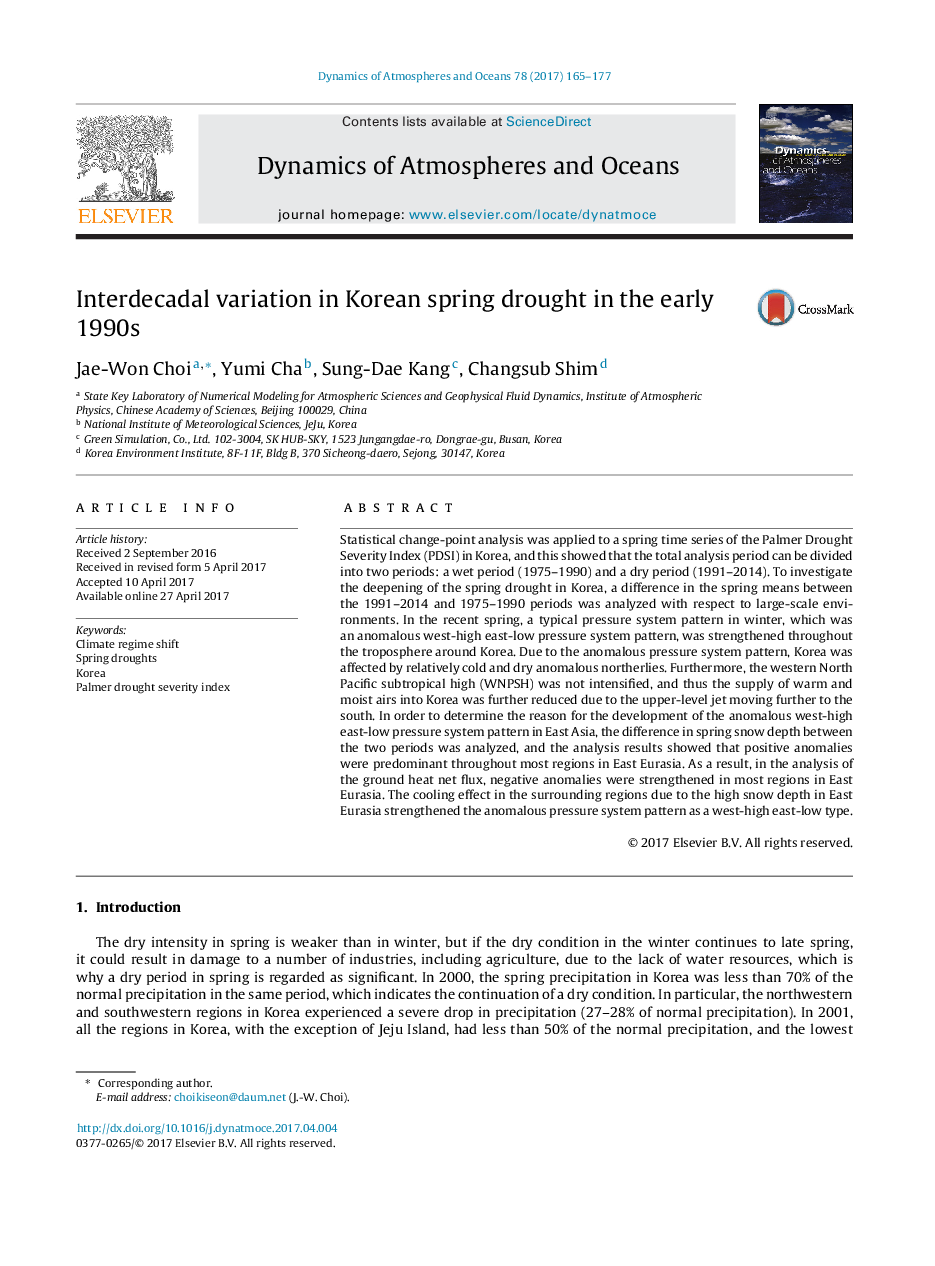| Article ID | Journal | Published Year | Pages | File Type |
|---|---|---|---|---|
| 5779125 | Dynamics of Atmospheres and Oceans | 2017 | 13 Pages |
â¢Statistical change-point analysis was applied to a spring time series of the Palmer Drought Severity Index (PDSI) in Korea, and this showed that the total analysis period can be divided into two periods: a wet period (1975-1990) and a dry period (1991-2014). To investigate the deepening of the spring drought in Korea, a difference in the spring means between the 1991-2014 and 1975-1990 periods was analyzed with respect to large-scale environments. In the recent spring, a typical pressure system pattern in winter, which was an anomalous west-high east-low pressure system pattern, was strengthened throughout the troposphere around Korea. Due to the anomalous pressure system pattern, Korea was affected by relatively cold and dry anomalous northerlies. Furthermore, the western North Pacific subtropical high (WNPSH) was not intensified, and thus the supply of warm and moist airs into Korea was further reduced due to the upper-level jet moving further to the south. In order to determine the reason for the development of the anomalous west-high east-low pressure system pattern in East Asia, the difference in spring snow depth between the two periods was analyzed, and the analysis results showed that positive anomalies were predominant throughout most regions in East Eurasia. As a result, in the analysis of the ground heat net flux, negative anomalies were strengthened in most regions in East Eurasia. The cooling effect in the surrounding regions due to the high snow depth in East Eurasia strengthened the anomalous pressure system pattern as a west-high east-low type.
Statistical change-point analysis was applied to a spring time series of the Palmer Drought Severity Index (PDSI) in Korea, and this showed that the total analysis period can be divided into two periods: a wet period (1975-1990) and a dry period (1991-2014). To investigate the deepening of the spring drought in Korea, a difference in the spring means between the 1991-2014 and 1975-1990 periods was analyzed with respect to large-scale environments. In the recent spring, a typical pressure system pattern in winter, which was an anomalous west-high east-low pressure system pattern, was strengthened throughout the troposphere around Korea. Due to the anomalous pressure system pattern, Korea was affected by relatively cold and dry anomalous northerlies. Furthermore, the western North Pacific subtropical high (WNPSH) was not intensified, and thus the supply of warm and moist airs into Korea was further reduced due to the upper-level jet moving further to the south. In order to determine the reason for the development of the anomalous west-high east-low pressure system pattern in East Asia, the difference in spring snow depth between the two periods was analyzed, and the analysis results showed that positive anomalies were predominant throughout most regions in East Eurasia. As a result, in the analysis of the ground heat net flux, negative anomalies were strengthened in most regions in East Eurasia. The cooling effect in the surrounding regions due to the high snow depth in East Eurasia strengthened the anomalous pressure system pattern as a west-high east-low type.
